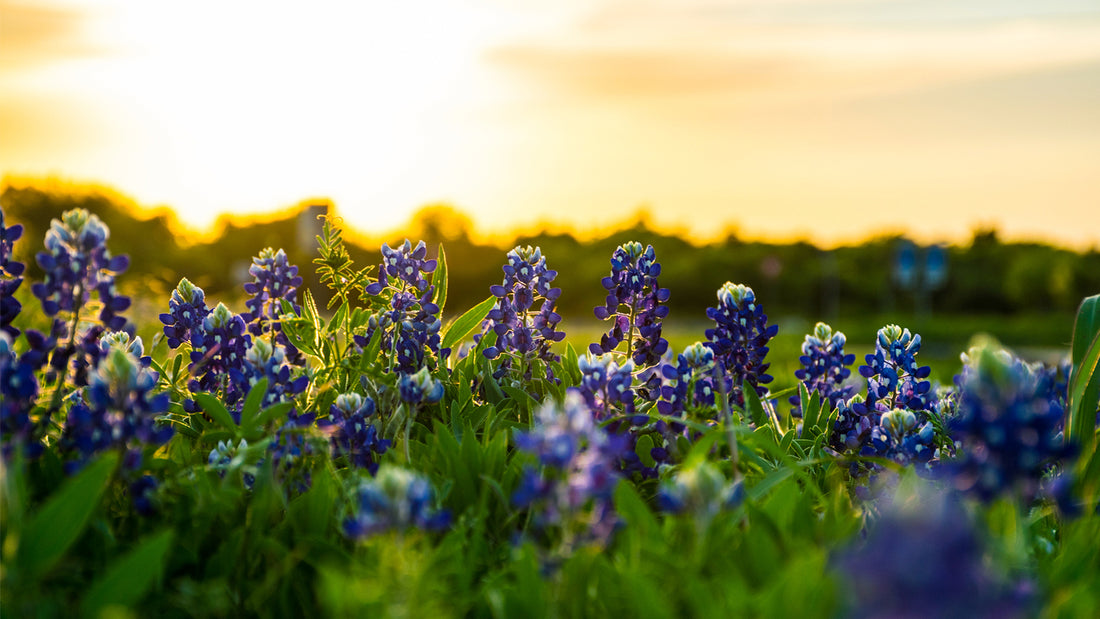As iconic symbols in Central Texas, the Texas bluebonnet and the Golden-cheeked Warbler are synonymous with spring. Though Mother Nature doesn’t have an exact schedule, we can count on her to nudge them out of their hibernation. Their grand entrances every year let us know the cycle of life continues and spring has arrived.
The Texas Bluebonnet
With their vibrant blue heads delicately peeping out sometime between late February and early March, the Texas bluebonnet is certainly the most recognized and celebrated of native flowers. As a state flower, it’s not alone. It’s actually one of six, which by the way, are all species of the genus Lupinus. Or, more commonly known as bluebonnets. Most believe it got its name because its petals resemble a sunbonnet. The deep-colored blue texensis Lupinus variety is the most well-known.
During spring these truly dazzling wild blue wonders fill large fields and pastures along highways and rural scenic byways from the north to as far south as the Texas panhandle. And, stopped cars alongside the road snatching the perfect photo op. Generations of Texas families wait in anticipation to create time-honored hand-me-down photographs with one the state’s most beloved blooms.
By early May the blooms begin to slowly disappear. But, the show’s not over because the state’s other wildflowers begin to make their appearance. The Indian paintbrush, pink evening primrose, Indian blanket, and Mexican hat begin to show their true colors—vibrant oranges, golden yellows, and delicate pinks. Visit the Lady Bird Johnson Wildflower Center to learn more. Workshops and events focus on the state’s natural environment and habitats for wildflowers, bees, and birds.
The Golden-Cheeked Warbler
Yellow-faced and rare the Golden-cheeked Warbler is truly a national and state treasure. This small songbird nests exclusively in Central Texas and nowhere else in the world. In fact, it comes home every spring to Balcones Canyonlands National Wildlife Refuge in nearby Cedar Park. Federally-operated Balcones exists to protect the habitat of the warbler, and another species, the Black-capped Vireo. These two highly endangered migratory birds make their way to Texas from Mexico during the nesting season beginning in March.
Male warblers can be heard singing from the tree-tops of the refuge’s Juniper trees. Their unusual breeding habitat on hillsides and slopes in mature woods of Ashe junipers and oaks makes the refuge a one-of-a-kind. Most likely you’ll find them breeding among brakes of junipers 10-20’ tall scattered with trees like oaks, walnuts, pecans, and hackberries. Visit the refuge’s headquarters to learn more about the habitat of these two birds.
Shop Spring at Breed
There’s still time to shop for spring décor, plants, bird feeders, and more from all four Breed & Company locations. Visit us today and shop the spring collection for all your home décor and landscaping must-haves.

